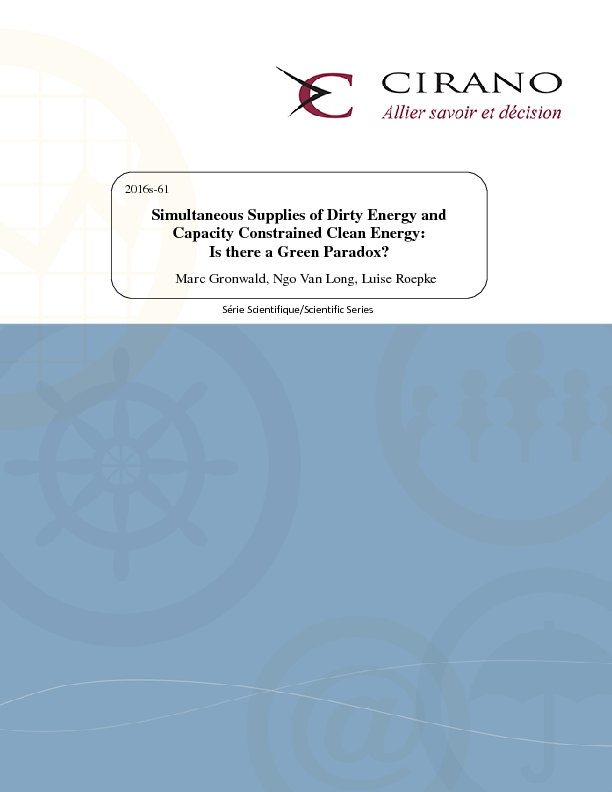Simultaneous Supplies of Dirty Energy and Capacity Constrained Clean Energy: Is there a Green Paradox?
We
analyze the effects of two popular second-best clean energy policies, using an
extended resource extraction framework. This model features, first,
heterogeneous energy sources and, second, a capacity-constrained backstop
technology. This setup allows for capturing the following two empirical
observations. First, different types of energy sources are used simultaneously
despite different production costs. Second, experiences from various European
countries show that a further expansion of the use of climate friendly
technologies faces substantial technological as well as political constraints.
We use this framework to analyze if under two policy scenarios a so-called
“Green Paradox” occurs. A subsidy for the clean energy as well as an expansion
of the capacity of the clean energy are considered. The analysis shows that
while both policy measures lead to a weak Green Paradox, a strong Green Paradox
is only found for the capacity expansion scenario. In addition, the subsidy is
found to be welfare enhancing while the capacity increase is welfare enhancing
only if the cost of adding the capacity is sufficiently small.
[ - ]




